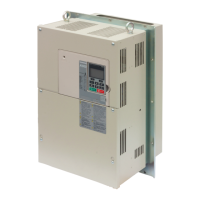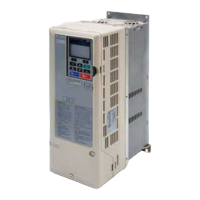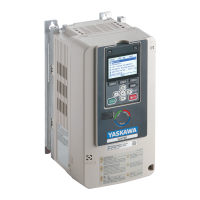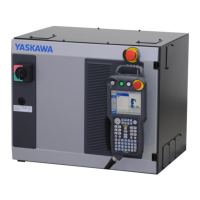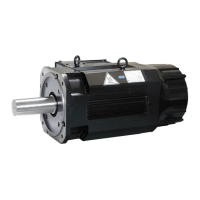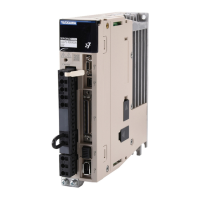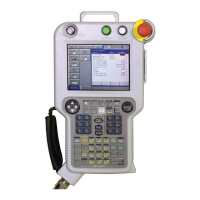6.2 Motor Performance Fine-Tuning
This section offers helpful information for counteracting oscillation, hunting, and other problems that occur while performing
a trial run. Refer to the section below that corresponds to the motor control method used.
Note: This section describes commonly edited parameters that may be set incorrectly. Consult Yaskawa for more information on detailed settings
and for fine-tuning the drive.
u
Fine-Tuning V/f Control and V/f Control with PG
Table 6.1 Parameters for Fine-Tuning Performance in V/f and V/f w/PG
Problem Parameter No. Corrective Action Default
Suggested
Setting
Motor hunting and
oscillation at speeds
between 10 and 40 Hz
Hunting Prevention Gain
(n1-02)
• Reduce the setting if insufficient motor torque relative to the size
of the load causes hunting.
• Increase the setting when motor hunting and oscillation occur
with a light load.
• Reduce the setting if hunting occurs when using a motor with a
relatively low inductance, such as a high-frequency motor or a
motor with a larger frame size.
1.00 0.10 to 2.00
• Motor noise
• Motor hunting and
oscillation at speeds up
to 40 Hz
Carrier Frequency
Selection (C6-02)
• Increase the carrier frequency If the motor noise is too loud.
• Lower the carrier frequency when motor hunting and oscillation
occur at speeds up to 40 Hz.
• The default setting for the carrier frequency depends on the drive
capacity (o2-04) and the duty selection (C6-01).
1 (2 kHz) 1 to max. setting
• Poor torque or speed
response
• Motor hunting and
oscillation
Torque Compensation
Primary Delay Time
(C4-02)
• Reduce the setting if motor torque and speed response are too
slow.
• Increase the setting if motor hunting and oscillation occur.
200 ms
<1>
100 to 1000 ms
• Poor motor torque at
speeds below 10 Hz
• Motor hunting and
oscillation
Torque Compensation
Gain (C4-01)
• Increase the setting if motor torque is insufficient at speeds
below 10 Hz.
• Reduce the setting if motor hunting and oscillation with a
relatively light load.
1.00 0.50 to 1.50
• Poor motor torque at
low speeds
• Motor instability at
motor start
Mid Output Voltage A
(E1-08)
Minimum Output
Voltage (E1-10)
• Increase the setting if torque is insufficient at speeds below 10
Hz.
• Reduce the setting If motor instability occurs at motor start.
E1-08:
15.0 V
E1-10:
9.0 V
<2>
Default setting
±5 V
Poor speed precision
(V/f control)
Slip Compensation Gain
(C3-01)
Set the motor-rated current (E2-01), motor-rated slip (E2-02), and
motor no-load current (E2-03), then adjust the slip compensation
gain (C3-01).
0.0
(no slip
compen-
sation)
0.5 to 1.5
Poor speed precision
(V/f control with PG)
ASR Proportional Gain 1
(C5-01)
ASR Integral Time 1
(C5-02)
<3>
<4>
Adjust the ASR proportional gain 1 (C5-01) and the ASR integral
time 1 (C5-02).
C5-01: 0.20
C5-02: 0.200
Proportional
gain =
0.10 to 1.00
Integral time =
0.100 to 2.000
<1> Default setting value is dependent on parameter A1-02, Control Method Selection, and o2-04, Drive Model Selection.
<2> Default settings change after changing the control method (A1-02) or selecting a different V/f pattern (E1-03).
<3> ASR in V/f Control with PG only controls the output frequency, and does not allow the same high gain settings as CLV control.
<4> Refer to C5: Automatic Speed Regulator (ASR) on page 161 for details on ASR.
6.2 Motor Performance Fine-Tuning
290
YASKAWA ELECTRIC SIEP C710616 31B YASKAWA AC Drive – A1000 Technical Manual
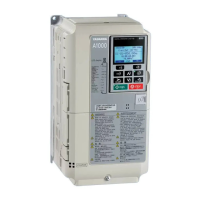
